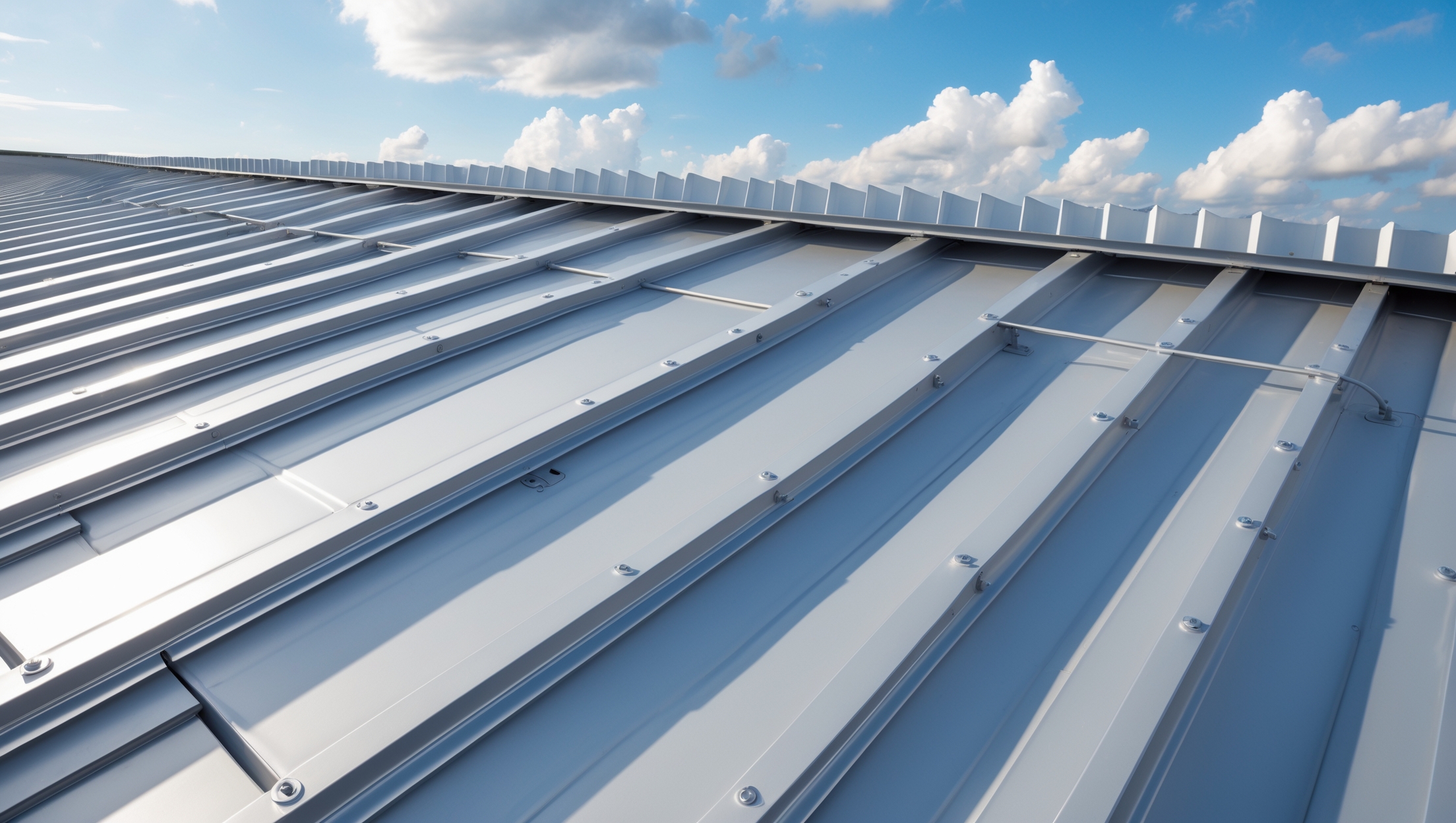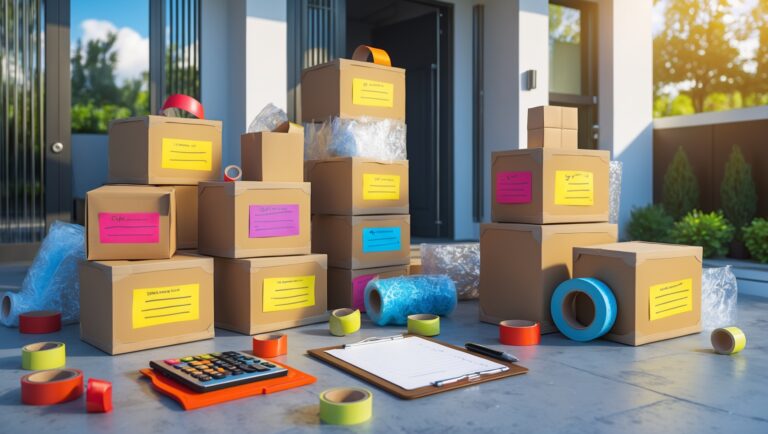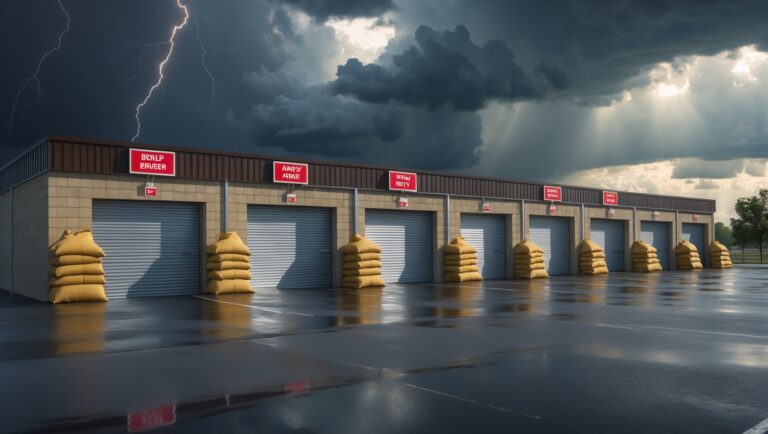Storage Facility Roof Maintenance: Preventing Leaks, Rust, and Costly Repairs
Introduction
For storage facility owners and operators, a well-functioning roof is more than just a structural necessity—it’s a critical investment in asset protection, customer confidence, and long-term profitability. Roof neglect is one of the most common, yet costly, mistakes in the storage industry. Leaks can damage stored goods, lead to liability claims, and erode your reputation. Rust and corrosion can compromise roof integrity and trigger expensive repairs or even full replacements. Unfortunately, roof issues often go unnoticed until visible damage or customer complaints make them impossible to ignore.
This comprehensive guide is designed specifically for storage facility managers, maintenance teams, and owners who want to take a proactive approach to roof care. We’ll explore the leading causes of roof deterioration in storage environments, outline a practical maintenance schedule, and share proven methods for inspecting, cleaning, and repairing all common roof types. You’ll learn how to spot early warning signs before they become disasters, select the right materials for repairs, and implement preventive strategies that save money and protect your investment. Whether you operate a new facility or manage an aging property, these actionable insights will help you prevent leaks, control rust, and avoid the headaches of costly roof repairs.
Understanding Storage Facility Roof Types and Their Vulnerabilities
Common Roofing Materials and Designs
- Metal Roofs: The industry standard for most modern self-storage facilities due to their durability, fire resistance, and low maintenance. Usually constructed from galvanized steel, aluminum, or coated metals.
- Single-Ply Membranes: EPDM, TPO, and PVC membranes are increasingly used on flat or low-slope roofs for their waterproofing properties and energy efficiency.
- Asphalt Shingles: Sometimes found on older or converted storage buildings. Less common due to shorter lifespan and higher maintenance needs.
- Built-Up Roofing (BUR): Multi-layer systems used on flat roofs, typically with gravel ballast.
Main Threats to Storage Facility Roofs
- Water Intrusion: Leaks from heavy rain, snowmelt, or standing water are the most frequent causes of damage to stored goods and building interiors.
- Rust and Corrosion: Metal roofs are susceptible to oxidation, especially in humid, coastal, or industrial environments.
- UV Degradation: Sun exposure can break down roofing membranes, coatings, and sealants, leading to cracks and leaks.
- Poor Drainage: Blocked gutters or inadequate slope can cause ponding water, which accelerates roof deterioration.
- Physical Damage: Hail, falling branches, foot traffic, or maintenance equipment can puncture or dent roofs.
- Improper Repairs: DIY patch jobs or use of incompatible materials can worsen problems over time.
Establishing a Preventive Roof Maintenance Program
Why Preventive Maintenance Pays Off
Proactive roof care extends service life, minimizes emergency repairs, and reduces liability. Addressing minor issues early can prevent catastrophic leaks, structural rot, and tenant losses. An effective maintenance program also supports insurance compliance and enhances property value.
Developing a Maintenance Schedule
- Bi-Annual Inspections: Schedule thorough roof inspections every spring and fall, ideally before and after severe weather seasons.
- Post-Storm Checks: Inspect after heavy storms, hail, or strong winds to catch damage early.
- Routine Gutter Cleaning: Clean gutters and downspouts quarterly, or more often if surrounded by trees.
- Annual Professional Assessment: Budget for an annual inspection by a commercial roofing professional to identify hidden issues.
Inspection: Spotting Problems Before They Escalate
Exterior Inspection Checklist
- Look for missing, bent, or rusted fasteners and screws.
- Check for loose or damaged panels, membrane seams, or shingles.
- Examine flashing around vents, HVAC units, and skylights for gaps or corrosion.
- Inspect roof penetrations (pipes, exhausts) for proper sealing and signs of water intrusion.
- Identify standing water or ponding, especially on flat roofs.
- Look for areas of discoloration or algae/moss growth.
- Check all gutters, downspouts, and drains for obstructions.
Interior Inspection Checklist
- Inspect ceilings and upper walls of storage units for water stains, dampness, or mold.
- Check for peeling paint or bubbling plaster, which may indicate hidden leaks.
- Look for daylight showing through the roof, especially at seams or joints.
Documentation and Record Keeping
- Photograph problem areas and track repairs in a maintenance log.
- Keep records of inspections, maintenance tasks, and contractor invoices. This helps with insurance claims and future budgeting.
Cleaning and Routine Care: The Foundation of Roof Longevity
Clearing Debris
Remove leaves, twigs, and dirt from the roof surface and gutters. Organic matter traps moisture and accelerates corrosion or membrane decay. Use soft brooms or blowers for metal roofs to avoid scratching the finish. Avoid harsh chemicals that could damage coatings or membranes.
Addressing Algae and Moss
- Use a gentle, non-abrasive roof cleaner approved for your material.
- Apply with a soft brush or sprayer—never use pressure washers on membranes or shingles.
- Install zinc or copper strips near the ridge to inhibit future growth.
Managing Drainage Systems
- Clear gutters and downspouts to prevent overflow and ice dams.
- Check for sagging or disconnected sections that impede flow.
- Ensure scuppers and roof drains are free of debris.
Rust Prevention and Treatment for Metal Roofs
Understanding Rust Risks
Metal roofs are protected by galvanization or coatings, but scratches, age, and environmental exposure can lead to rust. Coastal locations, industrial pollution, and acid rain accelerate corrosion. Left unchecked, rust can perforate panels and compromise structural integrity.
Preventive Steps
- Apply roof coatings or sealants every 5–8 years, or as recommended by the manufacturer.
- Touch up scratches or exposed fasteners with compatible rust-inhibiting paint.
- Inspect and replace deteriorated gaskets or washers on fasteners.
- Keep the roof clean and dry; avoid standing water at seams or low points.
Treating Existing Rust
- Use a wire brush to remove loose rust and debris.
- Apply a rust converter to neutralize remaining corrosion.
- Prime and repaint the affected area with a quality, metal-safe paint.
- Replace panels or fasteners if rust has caused holes or structural weakness.
Always wear appropriate PPE and follow manufacturer guidelines when working with rust removers or coatings.
Leak Prevention and Repair Strategies
Preventing Leaks
- Seal all roof penetrations with compatible flashing and sealant.
- Ensure overlapping panels and seams are properly fastened and sealed.
- Replace dried, cracked, or missing sealants immediately.
- Install snow guards or diverters in regions prone to heavy snowfall.
- Trim overhanging tree branches to prevent impact damage and leaf buildup.
Spot Repairs: How to Patch Minor Leaks
- Clean the area thoroughly and allow it to dry.
- Apply a high-quality roofing patch or self-adhesive membrane for small holes or cracks.
- For metal roofs, use roofing tape or sealant designed for metal compatibility.
- Monitor patches regularly and reapply as necessary.
For larger penetrations, seam failures, or persistent leaks, consult a commercial roofing contractor for permanent repairs.
Major Repairs and When to Call a Professional
Signs You Need Expert Help
- Multiple leaks or widespread water intrusion.
- Large areas of rust, corrosion, or membrane blistering.
- Sagging or structurally compromised roof sections.
- Persistent drainage issues that cannot be resolved by cleaning.
- Visible mold or rot in underlying roof decking or insulation.
Choose contractors experienced in commercial and storage facility roofing. Ask for references, proof of insurance, and a detailed scope of work. Quality repairs may require temporary tenant relocation for affected units—communicate clearly and provide appropriate notice to minimize disruption.
Budgeting and Planning for Roof Maintenance
Estimating Maintenance Costs
- Set aside 1–2% of building value annually for roof maintenance and repairs.
- Plan for larger capital expenditures every 10–20 years, depending on roof type and local climate.
- Include labor, materials, and emergency funds in your budget.
Warranty Considerations
Check manufacturer and installer warranties before performing repairs. Unauthorized work can void coverage. Maintain records of all maintenance to support warranty claims.
Best Practices for Long-Term Roof Health
- Train maintenance staff on proper inspection and cleaning techniques.
- Implement a digital maintenance log with photo documentation.
- Schedule regular roof walks, but minimize unnecessary foot traffic to avoid surface damage.
- Consider investing in roof coatings, reflective membranes, or upgraded drainage for older facilities.
- Work with local professionals to address unique climate or site-specific risks (e.g., snow load, salt air, industrial fallout).
Conclusion
Your storage facility’s roof is a silent guardian, protecting everything beneath it—your property, your tenants’ valuables, and your business reputation. Proactive maintenance isn’t just a best practice; it’s an absolute necessity in an industry where even a small leak can lead to major losses. By establishing a thorough inspection routine, prioritizing cleaning and drainage, addressing rust and corrosion promptly, and knowing when to call in the experts, you can extend the life of your roof and avoid costly surprises. Remember, roof care is not a one-time task but an ongoing commitment that pays dividends in peace of mind and property value.
Investing in regular roof maintenance and timely repairs demonstrates professionalism and builds customer trust—a competitive edge in the self-storage market. Start implementing these strategies today, and you’ll be well-equipped to prevent leaks, control rust, and protect your facility for years to come. For complex issues or major repairs, always seek guidance from experienced commercial roofing professionals. A little attention now can save you from major headaches—and expenses—down the line.






